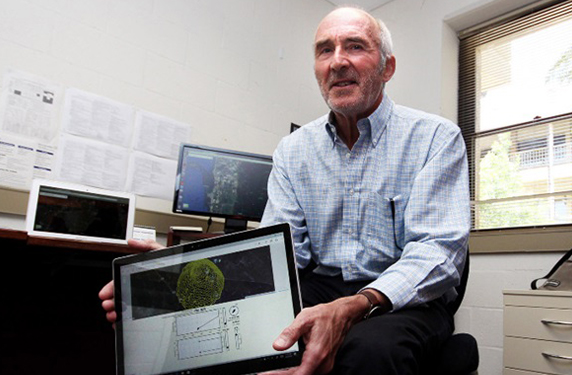If Professor George Milne‘s UWA team had had to start from scratch to build a virtual world computer disease model to run scenarios on how Perth could “flatten the curve” and prevent a COVID-19 rebound, it still would not be finished today.
But luck was on his side.
His team had already invested several years developing a “gold standard” individual-based disease model for analysing new seasonal influenza vaccination strategies for Australia, in a project commissioned by the Commonwealth Department of Health. In January this year, Professor Milne then realised this influenza model could be quickly altered and used to predict COVID-19 transmission, and to analyse alternative social distancing approaches.
He had a colleague at the University of Hong Kong who was able to provide details on coronavirus transmission characteristics from Hubei Province in China, data which was collected before containment measures were activated.
He also had a strong “sense” very early on that this novel virus outbreak was going to have a significant impact on Australia and elsewhere.
"At UWA, we have plans in place for us to model every major city in Australia and have that technology accessible to all the health departments in the country."
Professor George Milne
“So we took our influenza transmission model and modified the key parameters in it using this data from China, and then we had a COVID-19 model. This allowed us to identify where people become infected—in the household, in specific workplaces, or in the wider community.
“We were then quickly ready to go, and to capture the dynamics of a new virus being transmitted from person-to-person by aerosol droplets.
“If we had had to develop this model from the start, we would still be working on it now.
“That’s a lesson for us all. What COVID-19 has shown us is that we really do need sophisticated disease modelling capacity in Australia and we need to invest in it now, to be ready for future pandemics. This will allow us to develop a cohort of expert disease modellers and to train pandemic response teams by running model software to simulate virtual pandemics.
“At UWA, we have plans in place for us to model every major city in Australia and have that technology accessible to all the health departments in the country.”
This story is part of the series Computer modelling COVID-19 spread critical to flattening the curve.
Media references
Nicholas Smith, UWA Media Officer, 08 6488 1888 / 0411 644 492
